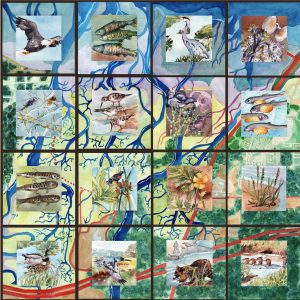
After the Restoration
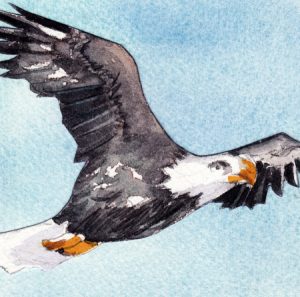
Bald Eagle
Bald Eagles (Haliaeetus leucocephalus) can often be seen along the Nisqually River, especially when the salmon are spawning. They nest at the Refuge. Bald Eagles were Federally listed as a threatened species until 2007.
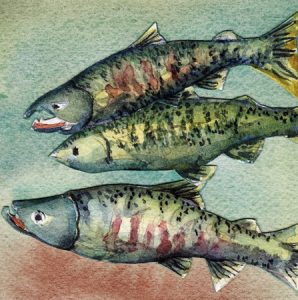
Adult Chum Salmon
Chum Salmon (Oncorhynchus keta) spawn from November to January. They are one of 5 species of wild salmon in the Nisqually River. The others include Summer/Fall Chinook, Pink Salmon, Coho Salmon, and Steelhead. The Nisqually River, Estuary, and Reach support over 90 species of fish from 30 different families. Once the adult Chum Salmon head out to deeper waters, they go to the Gulf of Alaska where they feed for 2-3 years before returning to spawn.
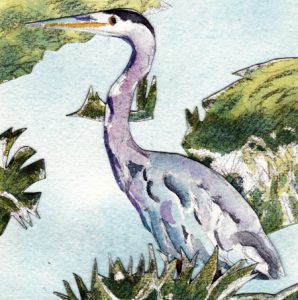
Great Blue Heron
Great Blue Herons (Ardea herodias) nest at Billy Frank Jr. Nisqually National Wildlife Refuge and can be seen fishing on the low tide (both incoming and outgoing), especially along the boardwalk.
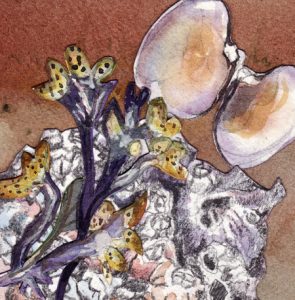
Manila Clams, Barnacles, and Rockweed
Rockweed (Fucus distichus) and Barnacles (genus Balanus) grow along rocks in the mudflats. Native Littleneck Clams (Leukoma staminea) burrow underground.
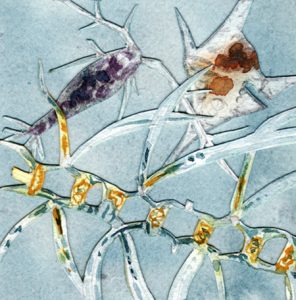
Microscopic Organisms
Microscopic organisms — Diatoms (genus Chaetocerus), Dinoflagellates (genus Ceratium)and Zooplankton (genus Acartia) — form the foundation of the estuary food chain. Some species are photosynthetic making energy from sunlight. Others eat plants. Some do both which makes it hard to classify them as a plant or animal.
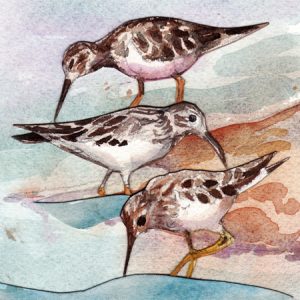
Greater Yellowlegs
Greater Yellowlegs (Tringa melanoleuca) are among the shorebirds that use the Billy Frank Jr. Nisqually National Wildlife Refuge as a migrating stopover and wintering grounds. They are common at Nisqually in the spring, fall, and winter.
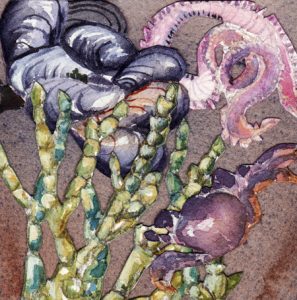
Crab, Mussels, Pickleweed, and Worms
Crab (genus Hemigrapsus), Mussels (genus Mytilus), Pickleweed (Salicornia virginica), and Worms (phylum Annelida, class Polychaeta) are common in the salt marshes.
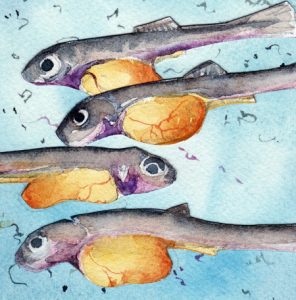
Chum Salmon Alevins
Chum Salmon Alevins. From November to January, Chum salmon lay eggs in the freshwater gravel of streams, such as Red Salmon Creek, that flow into the Nisqually River estuary. The embryos develop inside the egg sack and hatch after about four months. They live in the gravel and absorb their egg sacks for another six weeks.
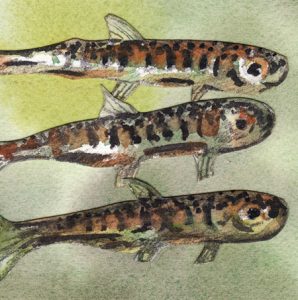
Chum Salmon Fry
Chum Salmon Fry. Once the young salmon absorb their yolk sacks, they emerge from the gravel as fry. They are about 1 – 1.5 inches long. They head downstream toward the Nisqually estuary where they live through the summer or longer before heading to the ocean. They seek shelter and food in the protected estuary channels.
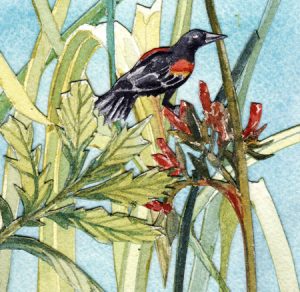
Red-Winged Blackbird, Lyngbye Sedge, and Pacific Silverweed
Lyngby Sedge, (Carex lyngbyei) and Pacific Silverweed (Argentina anserina) grow in coastal salt marshes, a perfect habitat for the territorial Red-winged Blackbird (Agelaius phoeniceus)
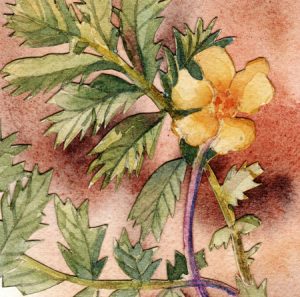
Pacific Silverweed
Pacific Silverweed (Argentina anserina) flower in coastal salt marshes along with Lyngby sedge.
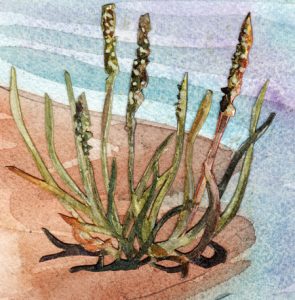
Seaside Plantain
Seaside Plantain (Plantago maritima) is a common salt marsh plant.
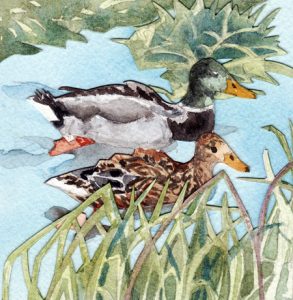
Mallards
The male (green head) and female (brown body) Mallards (Anas platyrhynchos) are abundant nesters at Billy Frank Jr. Nisqually National Wildlife Refuge. They can adapt to both salt and fresh water.
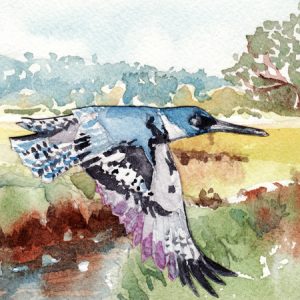
Belted Kingfisher
Belted Kingfishers (Ceryle alcyon) are common birds at Billy Frank Jr. Nisqually National Wildlife Refuge and feed on the abundant small fish found there.
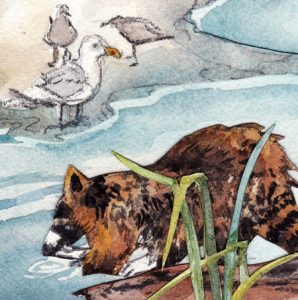
Raccoon and Glaucous-Winged Gulls
Raccoons (Procyon lotor) frequent salt marshes looking for bird hatchlings and eggs, fish, crabs, and shellfish. Glaucous-winged Gulls (Larus glaucescens) guard their nests against raccoon predators.
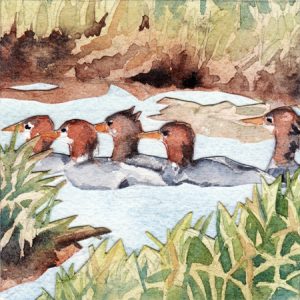
Red Breasted Mergansers
Red Breasted Mergansers (Mergus serrator)are almost always found in the estuary closer to McAllister Creek.
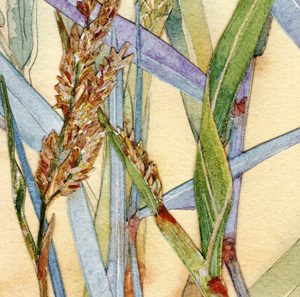
Reed Canary Grass
Reed Canarygrass (Phalaris arundinacea) thrives in freshwater wetlands and was introduced as forage for cows and to bind the soil. In the Northwest, it is invasive, crowding out other wetland species of plants and limiting species diversity of wild animals. It can choke waterways and make it difficult for fish and birds to pass. In the Nisqually, this invasive species was recently controlled by removing the agricultural dikes to allow flooding of the estuary with salt water.

